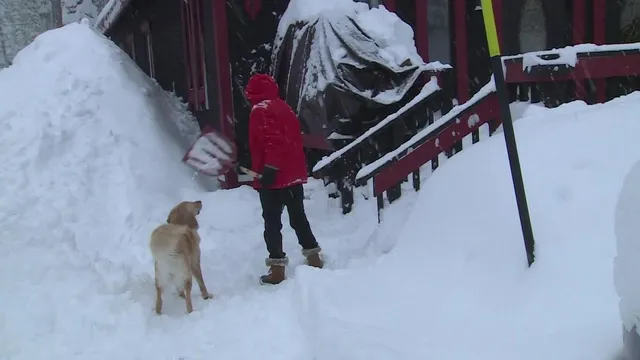
Heavy rain and snow create hazardous conditions in Northern California
2025-02-04 22:35- An atmospheric river is resulting in heavy rain and snowfall across Northern California.
- Flood advisories and wind advisories have been issued for numerous counties in the region.
- Travel safety is a concern, prompting authorities to discourage mountain travel amid potential avalanche risks.
Express your sentiment!
Insights
An atmospheric river has significantly impacted the weather across Northern California as of February 5, 2025, bringing heavy rain and snow to the region. The National Weather Service has issued a Flood Advisory for several counties, including Butte, Nevada, Plumas, Sierra, Yuba, and Placer, warning of potential flooding and hazardous travel conditions. Residents are advised to exercise caution while driving and allow extra time to reach their destinations due to poor weather conditions. A wind advisory has also been issued, bringing gusts of up to 45 mph to parts of the Sacramento Valley and northern San Joaquin Valley. In terms of snowfall, the mountainous areas of Northern California have already been blanketed with fresh snow, with expectations that this will continue through midweek. As a result of the storm, chain controls were put in place on major highways such as Interstate 80 and Highway 50 to ensure safer travel. The adverse weather conditions have prompted authorities to discourage mountain travel due to the risk of avalanches and other dangerous situations. An avalanche alert has been declared, signaling heightened awareness among mountain-goers. As the atmospheric river progresses, the heavier rains are forecasted to move south into Southern California, impacting areas including Los Angeles by Wednesday morning. There, rainfall between half an inch to over three inches is anticipated in the hills of Santa Barbara County. This weather system is also expected to bring additional precipitation days later, complicating recovery efforts in affected regions and heightening concerns around potential mudslides, flash floods, and general flood risks. The flood warnings currently in place signal increased vigilance among local authorities and residents alike as they prepare for the worst. Overall, the combination of rain and snowfall from this atmospheric river has created hazardous conditions across much of Northern California, leading to travel advisories and the possibility of flooding. Residents are urged to remain alert and heed all warnings issued by local authorities, as the weather system continues to disrupt standard conditions.
Contexts
The atmospheric river impacting California in February 2025 has had significant implications for the state, particularly concerning precipitation, flooding, and overall climatic conditions. These phenomena are characterized by long, narrow corridors of concentrated moisture in the atmosphere, which can deliver substantial amounts of rain and snow over short periods. In recent weeks, California has experienced intense rainfall driven by these atmospheric rivers, leading to rapid snowmelt in the Sierra Nevada mountains, which poses risks of both flooding and debris flows in the area. As the state continues to manage its water resources, particularly following years of drought, the challenges presented by these sudden deluges can exacerbate existing vulnerabilities within its infrastructure and ecosystems. The February 2025 atmospheric river event has caused widespread disturbances across various regions in California, with particular attention paid to urban flooding in metropolitan areas and heightened levels of river discharge. Hydrological assessments indicate that rivers are nearing or exceeding flood stage, creating risks for communities living near waterways. Flash floods have resulted in evacuation orders in several counties, while emergency responders have been mobilized to manage the situation. Drains and stormwater systems, designed for moderate rainfall, are being overwhelmed, further emphasizing the need for updated infrastructure to contend with increased variability in precipitation patterns due to climate change. Furthermore, the positive side of the atmospheric river phenomenon is the benefit of substantial snowpack that builds in the mountains during these events. The accumulated snow is crucial for California's water supply, serving as a natural reservoir that melts in the spring and summer months, releasing water into reservoirs and providing irrigation for agriculture. However, a balance must be carefully managed since rapid snowmelt can lead to severe flooding, as seen in past events. Consequently, water management agencies are tasked with capturing the surplus while preventing floodwaters from causing widespread damage to infrastructure and the environment. In conclusion, while atmospheric rivers pose risks to public safety, infrastructure, and ecosystems, they also contribute positively to the state's water supply. The lessons learned from previous atmospheric river events emphasize the importance of preparedness, robust infrastructure, and adaptive water management strategies. Moving forward, California will need to continue refining its approach to managing these dynamic climatic phenomena to ensure both the safety of its residents and the sustainable use of its water resources amid a changing climate.